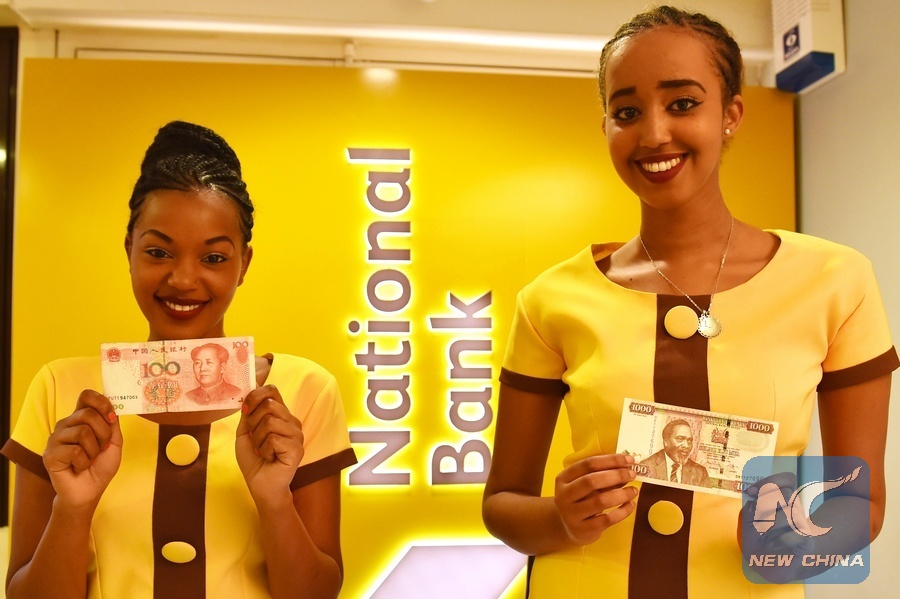
Two attendants display a Chinese currency note and a Kenyan Shilling note during the opening ceremony of a new branch of the National Bank of Kenya which will host a clearing house for Chinese renminbi (RMB) in Nairobi, Kenya, July 22, 2015.
NAIROBI, Oct. 13 (Xinhua) -- With China's financial cooperation with African countries going from strength to strength, there has been a rapid rise in the amount of transactions denominated in the Chinese currency, the yuan.
The trend is expected to pick up momentum following the yuan's recent inclusion in the elite global reserve currency club.
China has long hoped to see a rapid use of the yuan in Africa, commensurate to the importance it attaches to its economic and political cooperation with the continent. Economic trends in Eastern and Southern Africa show this wish is materializing, evidenced by the growing demand and acceptance of the Chinese currency.
In Kenya, CFC Stanbic Bank was among the first major facilitators of the trade and economic relations with the introduction of a direct currency exchange between the Renminbi (RMB) and the Kenya Shilling.
This helped reduce currency transaction losses in the process.
CFC Stanbic Chief Executive Philip Odera said the expanded trade between African countries and China has made it necessary for traders from African countries to stock up on the RMB, commonly known as the yuan, to meet constant demand for the Chinese imports.
Kenyan economist Dr Gerishon Ikiara said the growth of the Chinese currency was a guaranteed matter, not a matter of if, but when, depending on the demand factors.
"The Chinese currency, the Renminbi, was little known in Kenya and indeed the majority of African countries largely because it had not been used much as an international or hard currency in the settlement of trade transactions," Ikiara told Xinhua in a recent interview.
"As a result of this, forex bureaus and many other financial institutions rarely handled the Chinese currency partly because both demand and supply were insignificant," Ikiara added.
The International Monetary Fund (IMF) included the RMB among the currencies on its basket of Special Drawing Rights (SDR) in what was read as a sign of confidence on China's economic stability.
The good news of the yuan's growing acceptance as a medium of exchange and as a store of value was being reported by traders in countries such as South Sudan, where traders seek to hold the yuan.
Simon Akuei Deng, Secretary General of South Sudan Chamber of Commerce, Industry and Agriculture (SSCCIA) welcomed the CFC Stanbic's introduction of yuan transactions into South Sudan.
In South Sudan, traders have reported a rising demand for the yuan in the market, driven by the demand from South Sudanese business people who trade with China.
The trade in South Sudan was initially affected by the dollarization of the business environment which was affected by the government's step to devalue the national currency, the pound.
Deng described the growing use of the yuan as a "mutually beneficial arrangement" as both suppliers in China and importers in South Sudan will enjoy the trade facilitation eased by the currency availability through the CFC Stanbic Bank introduction of the yuan-denominated transactions.
Ikiara said the listing of the yuan by the IMF made the Chinese currency acquire new status, increasing its utilization in the settlement of global trade transactions.
Ikiara predicted that virtually all financial institutions in both developing and developed countries will, out of necessity, make RMB a key hard currency in their operations.
In South Sudan, with nearly 60 percent of all imported goods, including electrical goods, construction material and heavy machinery are manufactured in China, the expansion of the Chinese currency offers a short-cut to trade, long affected by delays in making bank transfers and variation in exchange rates.

